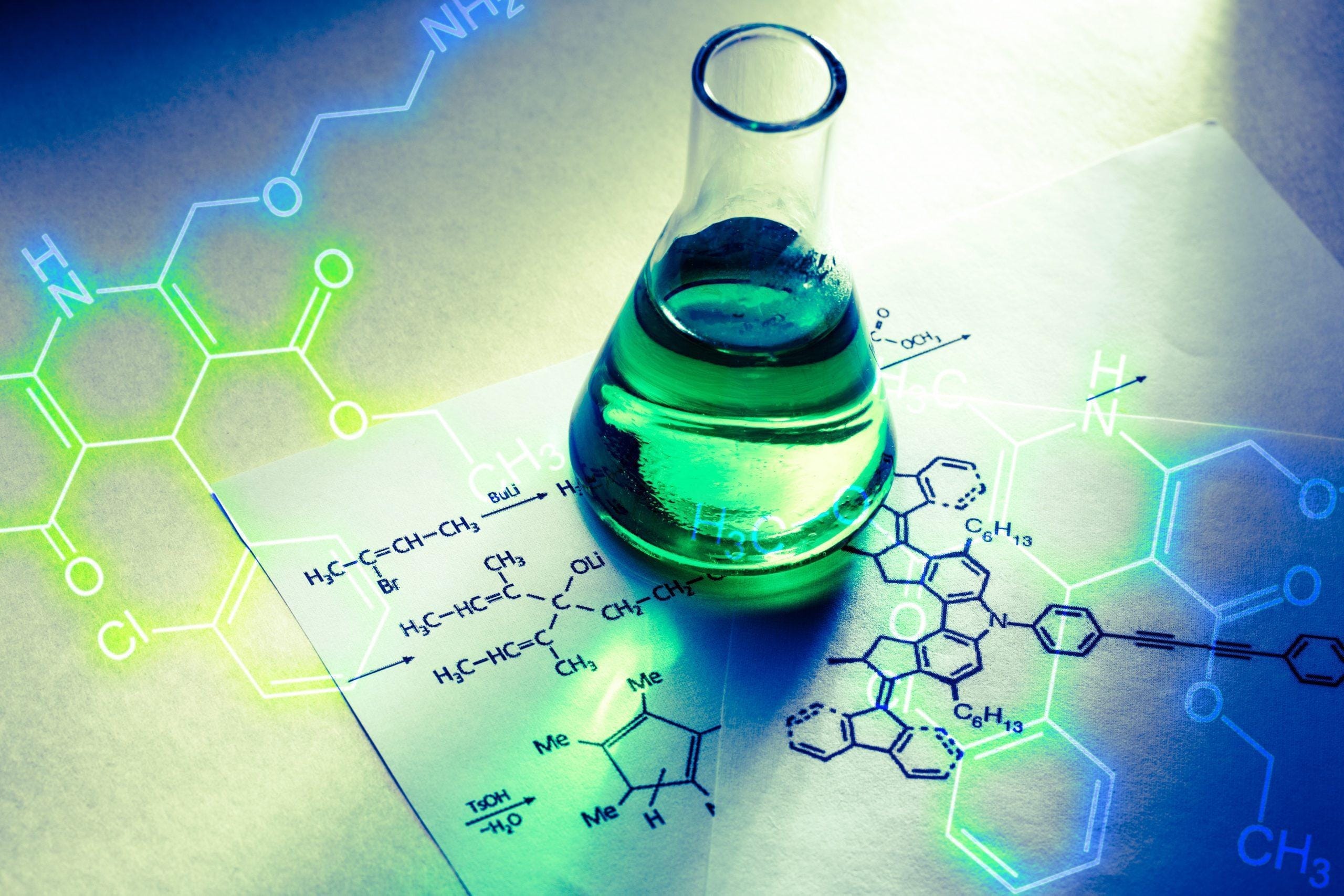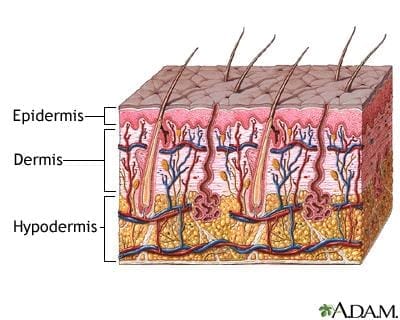Understanding the Science Behind Green Neck Stains from Necklaces
When you clasp a beautiful necklace around your neck, the last thing you expect is to find an unsightly green stain lingering on your skin after a long day of wear. Yet, this common occurrence has puzzled many jewelry lovers and casual wearers alike. What lies beneath this curious phenomenon? As we navigate the world of accessories, it’s important to understand not only the aesthetics but also the science that governs our interactions with them. In this article, we’ll delve into the chemical reactions and materials responsible for green neck stains from necklaces, unraveling the mysteries behind copper, skin acidity, and the interplay of various factors that contribute to this unlikely outcome. Join us as we explore the intersection of fashion and chemistry, shedding light on why something so beautiful can sometimes leave an unexpected mark.
Exploring the Chemistry of Skin Reactions to Jewelry
The chemistry behind skin reactions to jewelry, particularly the infamous green neck stains, can be attributed to the interaction of various metals with moisture and the natural oils of the skin. Most often, the culprit is copper, a common component in many costume jewelry pieces. When exposed to sweat, humidity, or even skin lotions, copper oxidizes and forms copper salts, which have a vibrant green hue. This process can be illustrated as follows:
- Oxidation: Copper reacts with oxygen and moisture.
- Formation of Cupric Salts: As oxidation progresses, compounds such as copper carbonate and copper chloride form.
- Contact with Skin: These compounds react with the skin’s pH, leading to the green staining observed.
Interestingly, the degree of staining can vary significantly from person to person. This variation can depend on several factors, including:
| Factor | Influence on Staining |
|---|---|
| Skin pH | Acidic skin can enhance reaction rates, leading to more staining. |
| Sweat Composition | Diet and hydration levels can affect the salts produced in sweat. |
| Jewelry Coating | Higher quality pieces often use protective coatings to minimize reactions. |
Understanding these reactions not only aids in preventing those unsightly stains but also helps consumers make informed choices when selecting jewelry. By opting for higher quality materials, such as sterling silver or surgical-grade stainless steel, individuals can reduce the likelihood of unpleasant skin reactions, ensuring a more enjoyable wearing experience.

Identifying Common Metals That Cause Green Stains
When wearing necklaces, especially those composed of non-precious metals, you may notice unsightly green stains on your skin. This phenomenon is often due to the chemical reactions between the metal in the necklace and moisture, sweat, or even body chemistry. Certain metals are more notorious than others for causing these stains, primarily because they contain copper or nickel, both of which can oxidize and create green compounds under specific conditions. The most common culprits include:
- Copper: Frequently found in brass and bronze, it oxidizes easily, leading to turquoise-green staining.
- Nickel: Commonly used in various alloys, it can also cause skin reactions and staining.
- Brass: A mixture of copper and zinc, it can tarnish and react similarly to copper when exposed to sweat.
- Bronze: Another copper-based alloy, known for its green patina when it oxidizes.
To better understand the metals likely to lead to skin discoloration, consider the following table that highlights their composition and reactions:
| Metal | Common Alloys | Reason for Staining |
|---|---|---|
| Copper | Brass, Bronze | Oxidizes to form copper carbonate, resulting in green stains. |
| Nickel | Various metallic jewelry | Causes skin irritation and potential greening in high humidity. |
| Brass | Copper-Zinc Alloy | Reacts with moisture, producing verdigris and discoloration. |
| Bronze | Copper-Tin Alloy | Oxidizes over time, forming a green patina on surfaces. |

Preventative Measures to Keep Your Neckline Stain-Free
To maintain a pristine neckline and prevent unsightly stains from your favorite jewelry, consider incorporating a few proactive strategies into your daily routine. First and foremost, choose jewelry wisely. Opt for pieces made from hypoallergenic materials such as stainless steel, titanium, or gold, which are less likely to cause discoloration or irritation. Additionally, embrace regular cleaning of both your skin and your jewelry to minimize the likelihood of chemical reactions. A simple routine can involve gently washing the area of skin that comes into contact with your necklace with mild soap and water, followed by diligent drying. Remember that the oils, sweat, or lotions on your skin can contribute to the formation of those pesky green stains.
Furthermore, pay attention to your wardrobe choices. Clothing fibers can trap dirt and grime, which may react with metals. Consider wearing a cotton undershirt or a lightweight scarf beneath your jewelry, acting as a buffer that absorbs sweat and oils while protecting your skin. It’s also wise to consider the timing of wearing jewelry. Schedule your outfit planning around occasions where there may be a lot of moisture, such as workouts or pool parties, thus allowing for the avoidance of necklace wear during these times. Implementing these measures can greatly reduce the frequency and severity of shimmering green hues, helping you maintain a clean and elegant appearance over time.

Caring for Your Skin and Jewelry: Tips for Maintenance
Maintaining the health of your skin and the beauty of your jewelry is essential in preventing unpleasant surprises, like green neck stains from necklaces. Often caused by a reaction between your skin and the metal of the jewelry, these stains can be minimized with a few simple practices. To start, always make sure your skin is clean and hydrated before wearing jewelry. This creates a barrier that can reduce the likelihood of your skin reacting with the metal. Also, consider avoiding prolonged exposure to sweat, perfumes, and lotions, as these substances can interact with jewelry and expedite tarnishing or corrosion.
Taking care of your jewelry itself is equally important. Here are some tips to ensure both your skin and your necklaces remain in top condition:
- Regular Cleaning: Clean your jewelry regularly with a soft cloth to remove dirt and oils.
- Storage: Store necklaces in a cool, dry place to avoid moisture and oxidation.
- Avoidance: Try to limit wearing sensitive pieces during workouts or swims.
- Metal Choices: Opt for higher quality metals known for being skin-friendly, like surgical grade stainless steel or gold-plated options.
| Metal Type | Reaction Potential |
|---|---|
| Stainless Steel | Low |
| Brass | Medium |
| Silver | Medium to High |
| Nickel-Based Alloys | High |
By following these guidelines, you can enjoy your jewelry without the worry of unsightly green stains affecting your skin or tarnishing your beautiful pieces.
Q&A
Q&A: Understanding the Science Behind Green Neck Stains from Necklaces
Q1: What causes green neck stains when wearing certain necklaces?
A1: Green neck stains are primarily caused by a reaction between the skin and metals in the jewelry, particularly copper. When copper is exposed to moisture, such as sweat, it can oxidize and create copper salts, which may then transfer to the skin, resulting in green discoloration.
Q2: Are all necklace materials prone to causing green stains?
A2: Not all materials will lead to green stains. Fine metals like sterling silver, gold, and platinum typically contain higher purity levels and are less reactive with the skin. However, lower-quality metal alloys or plated jewelry may contain copper or other reactive metals that can lead to discoloration.
Q3: Is it harmful to have green stains on the skin?
A3: Generally, the green staining from copper is not harmful and is not a sign of an allergic reaction. It can be easily washed off with soap and water. However, if you experience itching, redness, or swelling, it may indicate an allergic reaction, and it’s advisable to remove the jewelry and consult a healthcare professional.
Q4: Can climate or skin type influence the development of green neck stains?
A4: Absolutely! Humidity and high temperatures can increase sweat production, intensifying the likelihood of green stains. Additionally, individuals with more acidic skin pH levels may experience a heightened reaction, as their skin can accelerate the oxidation process of certain metals.
Q5: How can one prevent green neck stains while wearing necklaces?
A5: To minimize the chances of green neck stains, consider these tips: opt for jewelry made with high-quality metals, apply a clear nail polish coat to the inner part of jewelry to create a barrier, and avoid wearing necklaces in high-sweat situations. Regularly cleaning and drying your jewelry can also help prevent tarnishing.
Q6: What should someone do if they notice green stains on their skin?
A6: If you notice green staining, wash the area with mild soap and water to remove it. If the stain persists or if you experience irritation, consider discontinuing the use of the jewelry and consulting with a dermatologist for further advice.
Q7: Are there any myths surrounding green neck stains from necklaces that we should be aware of?
A7: Yes, one common myth is that green neck stains are a sign of toxicity or that the jewelry is counterfeit. In reality, the staining is a purely chemical reaction between the skin and certain metals and does not indicate any harmful effects. Always research your jewelry and choose pieces made from reputable sources to avoid concerns about quality.
Q8: How can consumers make informed choices when purchasing necklaces?
A8: Consumers should look for jewelry marked as hypoallergenic, check for metal content, and consider reviews regarding durability and wear. Understanding the materials used in jewelry can empower consumers to make choices that suit their skin sensitivity and lifestyle, ultimately reducing the risk of unwanted green stains.
Key Takeaways
the phenomenon of green neck stains from necklaces is more than just a cosmetic concern; it’s a fascinating interplay of chemistry and personal choice. By uncovering the types of metals often involved, the role of pH balance of the skin, and the environmental factors at play, we gain a deeper understanding of why this occurs.
As you navigate your jewelry options, consider the materials and their properties; knowledge is your best accessory. Whether you choose to embrace the quirks of your favorite pieces or opt for hypoallergenic alternatives, remember that the science behind these stains offers insights that extend beyond appearance. After all, every detail matters in the pursuit of both beauty and well-being. With this newfound awareness, you can confidently adorn yourself, turning any potential setback into a stepping stone towards informed jewelry choices. Happy accessorizing!
